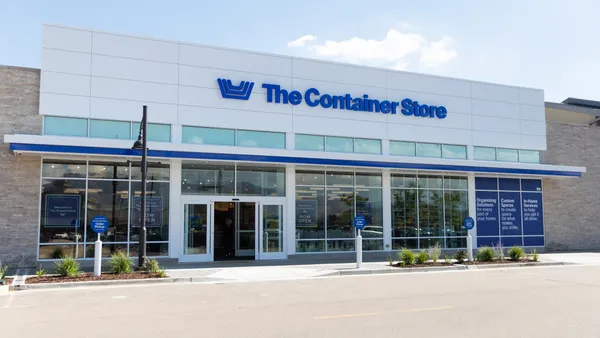Dive Brief:
-
The U.S. Department of Commerce on Wednesday said that core retail sales in February (excluding volatile food, auto, building materials and fuel sales) rose 0.1% following a January rise that was revised up to 0.8% from the previously reported 0.4%. Retail sales rose 5.9% from February 2016, while e-commerce sales in February rose 1.3% from January and 13% from the year-ago period, according to the report.
-
Overall retail sales in the month also rose 0.1%, following a similar upward revision to January’s previously reported 0.4%, now pinned at 0.6%.
-
The U.S. Department of Labor also on Wednesday reported that its Consumer Price Index increased 0.1% in February and 2.7% in the 12 months through February — the largest rise since March 2012 — bolstering the need for an anti-inflationary interest rate boost expected from the Federal Reserve.
Dive Insight:
Retail sales appear to be softening, though delays in tax refunds could be adding to that and, once refunds are in hand, consumers may buy more, as they did in 2013 when a similar delay occurred, GlobalData Retail managing director Neil Saunders said in an email to Retail Dive. Last year was also a leap year, which boosted sales figures somewhat, he added.
The tax refund issue has likely most hurt electronics retailers, which saw a 2.8% sales dip in February and a 6% decrease year over year, because consumers tend to splurge on that category using their refunds, he said.
“Given all this, it is fair to say that the downtick in spending during February is not the result of structural factors or a downswing in consumer sentiment; It is largely a temporary blip,” Saunders said, adding that, considering employment stability “there is nothing to suggest that the consumer economy should be losing this much momentum.”
Still, it would be “imprudent” not to acknowledge the vulnerabilities faced by retailers, especially those in the apparel segment (which saw February sales tumble 0.5%), he said. Pressure to discount will continue to plague those retailers, according to Saunders. “The rise in fuel prices is foremost among these,” he said. “Although there are now signs that pump prices are moderating and may start to fall as spring approaches, there is no doubt that consumers are paying more to fill up their vehicles – something that puts a dint in the amount they can spend elsewhere. … All in all, it points to a year that will see reasonable growth, but one in which margins will be under pressure."














